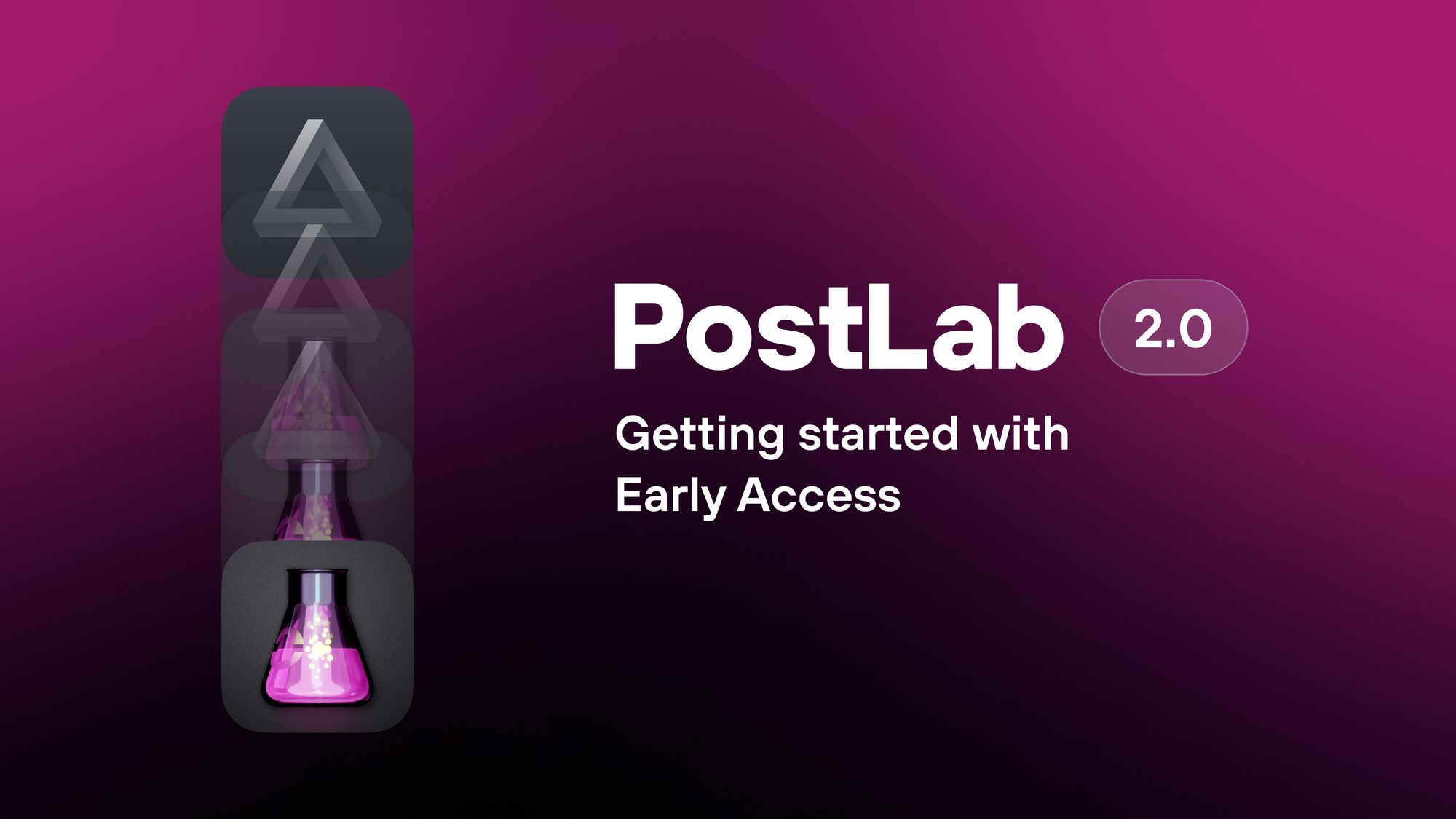Getting started with PostLab 2.0

PostLab 2.0 is a collaboration management tool for all creatives to work on shared project files collectively, check out what they need to work on and create a saved version history. We’ve put together a PostLab 2.0 introduction FAQ that should help answer many questions.
PostLab Classic and PostLab 2.0 are very similar, but there are some important differences you should be aware of:
Team Bundles are the central location where PostLab draws all its information from. You can create multiple bundles in multiple locations, but PostLab 2.0 will only read one at a time. Your choice of location for the Bundle will determine who you can collaborate with based on their access rights to that storage location.
In the old PostLab, each Production was a bundle; now, a bundle contains more than just a production to allow for the use of files across productions.
Collections live inside the bundle and are, as the name suggests, the collection of files being used for a project. You can have multiple Collections in one Bundle. In the original version of PostLab, Collections were called Productions. Multiple Collections in a Team Bundle now make it possible to share FCP libraries or iWork productivity documents across them. So, a document or library can exist in multiple collections, avoiding duplicates and keeping your storage lean.
Team Management no longer exists. Whilst the original PostLab utilized Teams to manage access, a key part of PostLab 2.0 is that it’s serverless. This means that PostLab 2.0 leverages your existing storage access rights, so there is no additional level of access required. If your team members have read and write access to a Team Bundle's location on your storage, they can access the Team Bundle's contents to collaborate.
Sounds good? Ready to get started?
Here’s how to get started 🚀
During Early Access, you’ll have full access to PostLab 2.0 Pro, allowing you to explore how its features can enhance your workflow.
We want to support every user in testing the new version throughout June & July and planning their migration for August 2024. As mentioned in our blog, we're sunsetting the current PostLab, including Drive, starting September 2024.
Rest assured, PostLab 2.0 will run alongside your current setup without disrupting your existing PostLab workflow. PostLab Classic will continue to work in parallel, so you can get a taste of PostLab 2.0.
Please follow the instructions below to ensure you can easily get up and running:
Step 1: We always advocate using the latest version, but in this case, you need to update your existing PostLab via the in-app updater to version 22.1.17. This is now officially known as PostLab Classic.
Step 2:
- Download the PostLab 2.0 installer.
- Run the installer and follow the on-screen instructions.
- During the installation, you will be prompted to enable Accessibility functionality. Follow the on-screen prompts to enable it.
- After installation, activate PostLab with your License Key.Once activated, the License Key will be displayed in your License Manager.
Your license is valid from early June 2024 until early August 2024. Your license key comes with 20 activations. If you need more, let us know, and we’ll add them at no charge for the remainder of the Early Access period. You can see the remaining duration of your license validity in the Settings option within PostLab 2.0.
Here’s a video to get you started!
Step 3: Bring your own storage!
You can use existing on-premise storage (DAS, NAS, SAN) to try out PostLab 2.0. This means you can start to test it locally with collaborators on the same network as your NAS via SMB. if you are currently using PostLab Drive to work with remote collaborators and also store your media in the cloud, you can enjoy the same direct cloud editing experience by using PostLab 2.0 together with a LucidLink FileSpaces.
Get your free 14-day trial of LucidLink.
We've created a new introductory blog about PostLab Drive and the storage options for PostLab 2.0. It includes information on how to download and migrate any project assets if needed.
Need Help?
Would you like more assistance? Our support documentation is right here.
We know this is a lot of information to process, so we’d love for you to dive into PostLab 2.0 to get your bearings and then join us for a workflow webinar on June 18th, 2024. We'll explore some of the workflows we showcased in Las Vegas and address any questions or feature requests.

